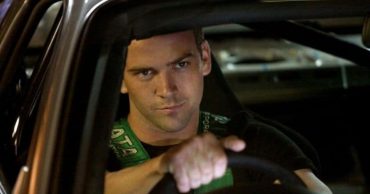
Fifty years ago Belle de Jour sensationally opened at the Venice Film festival, changing indefinitely the public perception about the cinematic expression of erotica. In the intervening years the fascination with Luis Bunuel’s creation did not fade out and in fact deepened — critics and audience equally admired its depth and analysed and speculated about the true meaning of some of its most iconic scenes. The film was visually staggering —Catherine Deneuve’s pale and glacial perfection juxtaposed against sordid fantasies and depictions of violence. It was also considered morally dubious — Bunuel had always been unforgiving towards the established bourgeois societal values, but here he went much further than criticism, allowing Deneuve’s character Severine to turn her daydreams into reality. The young and virtuous-looking Severine, unhappy and unfulfilled by her secure and neatly arranged married life, followed her fantasies and desires and turned into Belle de Jour — a part-time brothel worker.
Catherine Deneuve was 23 at the time of filming — a young chic Parisian who submitted herself to the masterful tutelage of the 67-year old Bunuel — genius saboteur and artistic ogre famed for forcing memorable performances out from his actors via his unique directorial style. Later Deneuve would mention feeling somehow used at the set, being made to show more in the film that she had actually agreed to. By that time it was too late — the movie had become a famous depiction of desire and deviance and Deneuve’s name would forever be linked with Belle de Jour.
Do we need a remake of this ground-breaking picture now, half a century later, after unconventional eroticism has firmly entered mainstream cinema? And who would be able to re-create Bunuel’s visions in the same tantalising way?
The generation of cinema lovers today will certainly benefit from having their own Belle de Jour with her own updated anxieties, sensuality and rebellious deviancy.
In terms of looks Gwyneth Paltrow could be a good match for Deneuve’s blond symmetrical beauty, but she is probably a bit superficial to portray Severine’s blend of modesty and sexual unorthodoxy. Much better choice would be Naomi Watts who has proved her ability to inhabit characters of widely different psychological qualities — just think of one her most recent parts in Gypsy, the Netflix original thriller. And she does possess this innocent blond, blue-eyed, peachy-faced looks that, inexplicably, can also be somewhat overcast with dark foreboding.
As for the choice of director, David Lynch would be more than capable to add a few impressively subversive scenes of his own making to the original Belle de Jour tableaux. Like Bunuel, he often plays with the audience by not showing things explicitly, but rather forcing them to imagine. Like Bunuel, he provokes, entices and torments. And, he already directed Naomi Watts in the super stylish Mullholland Drive.
Belle de Jour adapted to the present days is bound to be a success as people never cease to crave stories blurring the boundaries between fantasies and reality, and keep returning to them. Much like Catherine Deneuve who, once seemingly repulsed by the Bunuel’s approach, later submitted herself to his directorial control once more in Tristana, contributing to another masterpiece by the old master.
 Follow Us
Follow Us





